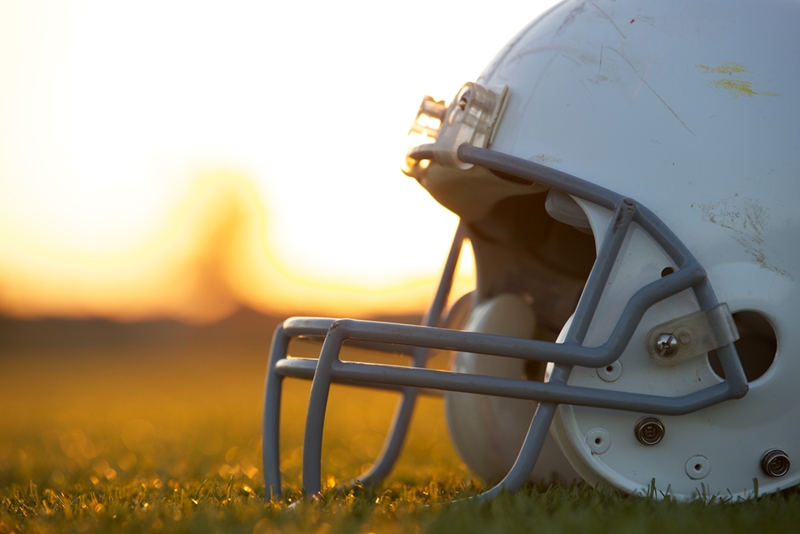
School is officially back in session, which means your kids have likely signed up for organized sports. Donning a jersey has its perks and downfalls. On the one hand, physical activity can enhance your children's overall well-being, allowing them to better maintain their weight, reduce their risk for cardiovascular disease and diabetes, and strengthen their bones and muscles.1 On the other, it can put your little ones at risk for serious injury, including dental trauma.
Nearly every sport poses some sort of threat to your kids' oral health. Baseballs, hockey pucks and football tackles all make players susceptible to injury. While coaches should diligently train teams on safety and proper techniques, no amount of practice can prevent every accident. As such, it's important for parents to be aware of sports-related dental injuries and consider oral care in their back-to-school plans:
"Hockey pucks and football tackles make players susceptible to injury."
Fractured or chipped tooth
Cracked and chipped teeth are the most common dental injuries, and they may not be immediately noticed.2 However, even without the existence of pain, a fractured tooth can still lead to dental problems. Even if just the outer layers of the tooth, known as the crown, are broken, the crack can run deeper if left untreated, damage the nerves and make the tooth more susceptible to decay. For this reason, it's important to know the signs of a chipped tooth if it's not visible or painful right away.
First, the sharp edges of chipped teeth can be typically felt with the tongue. Teach your children to do a quick examination with their tongues when they are impacted in the mouth area during sporting events. Discomfort may surface in the days following the incident, too. Your kids' mouths may be more sensitive to hot or cold, sweet, sour or sticky foods.3
In the event that any of these symptoms occur, it's important to immediately go to the dentist. While minor cracks and damage to primary teeth may not require treatment, your dental health professional may repair more severe damage with a tooth-colored filling or an artificial crown.
Knocked-out tooth
A dislodged or avulsed tooth is completely knocked out of its socket, roots and all.4 Unlike with the chipped tooth, you and your children will definitely know if this happens. This form of dental trauma may occur after a severe, direct impact. If you can find the tooth, pick it up by the crown (avoid touching the roots) and place it in a plastic container of whole milk, saliva or saline solution while you head directly to the dentist.
Your dental health professional may be able to place the dislodged tooth back in its socket and stabilize it with a splint within the first few hours.2 The patient may require root canal treatment as well. Any later, or if the avulsed tooth cannot be found, the dentist may treat the socket, and a partial denture may be used afterward to help with chewing and enhance the smile's appearance.
Shifted tooth
A luxated tooth shifts up, down, forward, backward or to the side but does not completely dislodge. Dentists treat this injury by adjusting the tooth into its natural position. A root canal treatment and medication may be needed, so it is crucial for the patient to get professional help immediately following the injury.

Keep your children's smiles healthy by practicing proper precautions.
Precautions
Mouth guards provide the best form of protection against the prevalence and severity of dental injuries.5 Note that they are beneficial for more than just contact sports. Other individual-focused athletic activities, like gymnastics or figure skating, still leave participants at risk for dental trauma through falls. It's crucial that you equip your children with well-fitted mouth guards by scheduling an appointment with your dentist, who can create custom-made pieces.
Dental discount cards can provide discounts for scheduled appointments and emergencies. In case the latter happens, it's crucial to keep your discount card on your person at all times.
________________________________________________________________
1. "The benefits of physical activity," Centers for Disease Control and Prevention. http://www.cdc.gov/physicalactivity/basics/pa-health/
2. "Traumatic dental injuries," American Association of Endodontists. http://www.aae.org/patients/treatments-and-procedures/traumatic-dental-injuries.aspx
3. "Do you have a cracked tooth?" April 2003, American Dental Association. http://www.ada.org/~/media/ADA/Publications/Files/patient_25.ashx
4. "Dental injuries," Cleveland Clinic. https://my.clevelandclinic.org/health/diseases_conditions/dental-injury-overview
5. "Mouth guards," American Dental Association. http://www.ada.org/en/member-center/oral-health-topics/mouthguards
